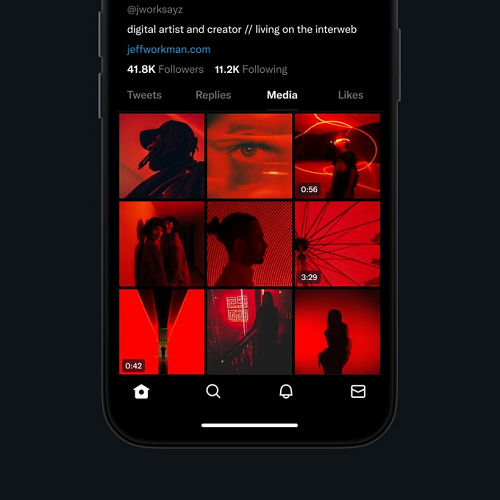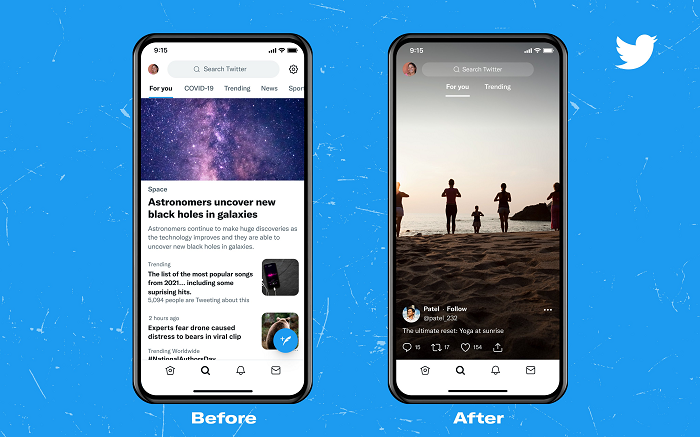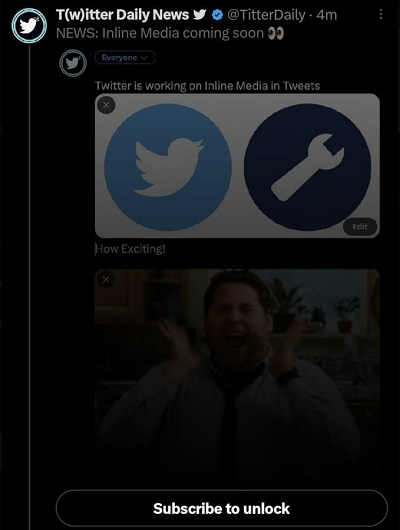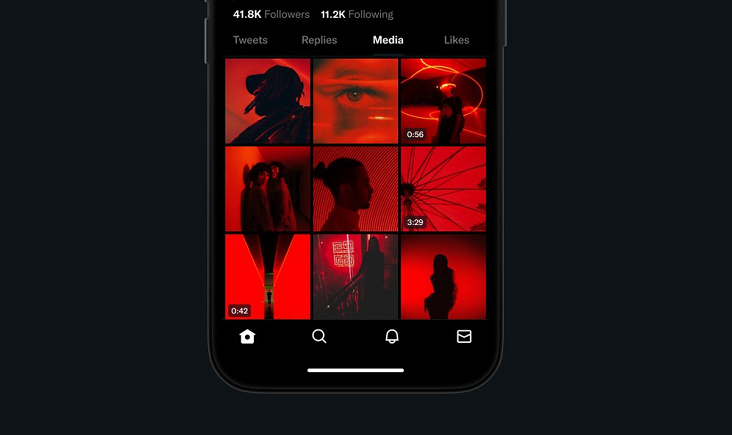Twitter’s looking to give its visual elements more focus, including, potentially, a new, dedicated video tab on user profiles, as it continues to re-shape the user experience under Elon Musk.
Elon has repeatedly noted that video needs more specific enhancement, including improved monetization options for creators, which, in his view, could eventually see Twitter compete with YouTube, by offering direct connection on-platform, and better ad revenue share.
If they can actually make it work.
First off, Twitter’s in the process of exploring new ways to present media content on user profiles, which could help to enhance the video experience.

As you can see in this example, shared by Twitter designer Andrea Conway, Twitter’s looking to update the display of the Media tab on user profiles to a more Instagram-like grid, which could make it a more engaging experience.
That also leads into the video tab idea, which Musk has noted is coming soon.
A separate in-app tab for videos could then be the next step, with a TikTok-like stream of video content, that users can easily scroll through, showcasing the best of Twitter’s video uploads in real-time.
Which Twitter has explored in the past, in a different way.
In December 2021, Twitter trialed a full-screen feed for Explore, which put more emphasis on video content.

Twitter shelved that experiment before Elon took over, but with a renewed focus on video, it could make a comeback – and we’ve already seen that Musk is keen to roll out older concepts and designs, with a view to boosting user engagement.
Which also leads to another new test – Twitter’s looking to roll out in-line images within longer tweets, which can now by up to a staggering 10,000 characters in length.
As you can see in this example, Twitter Blue subscribers will soon be able to add images into their longer tweets, making them more like blog posts – and more like Twitter’s ‘Notes’ long-form option which it launched, then shelved, last year.
Which I personally maintain is a better format for long-form content in the app, as opposed to the ‘Show More’ long tweets. But usage data will ultimately tell the tale.
The next stage, then, in Twitter’s broader push for hosting more content is enhanced monetization, which, at present, will be in the form of its recently re-launched Subscriptions option.
Originally called ‘Super Follows’, Twitter’s now looking to get more users to provide subscriber-only content, in order to help them monetize their Twitter following.
As part of this, Twitter’s covering the costs of staff who subscribe to creators in the app to help build hype, while it’s also considering a new subscriber content preview display, to help entice your audience.

That could prompt more subscribers to sign up – though it is also worth noting that Twitter’s initial experiments with Super Follows didn’t suggest that many users were overly interested in paying to subscribe to users in the app, at least at that stage.
In May last year, eight months after the initial launch of Super Follows, Twitter reported that its revenue from subscriptions and data licensing actually decreased by 31% year-over-year in the period. Which is not specific to Super Follows, but it does suggest that interest in the option was likely very low.
Still, Elon and Co. remain confident that this is a key growth pathway, and that Twitter can eventually provide better revenue potential than YouTube – which pays out over $10 billion a year to creators, on average.
That’s a lofty target, but maybe, with these new presentation and engagement options, Twitter can build on its potential in this respect.



